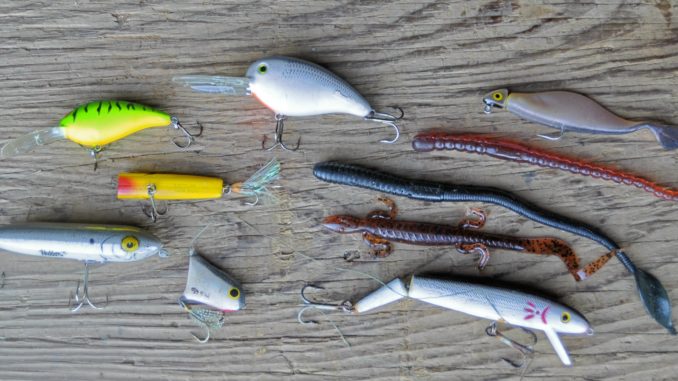
Depending on the body of water, fish can be shallow to extremely deep
For the better part of two weeks, June’s weather has got plenty of naysayers thinking that there may be something to global warming, and don’t think largemouth bass aren’t affected by all those back-to-back-to-back 90-degree days. And fishermen need to understand that the summer heat should change their approach and lure selection some.
The big change is concentrating on deeper water, fishing with Carolina rigs and crankbaits.
“After the cold spell during Memorial Day week, the shallow bite ended, (and) I started targeting bass that pulled off shore a little in 8- to 10-feet-deep water,” said guide Jeff Thomas of Broadway, who does most of his damage on Jordan and Shearon Harris lakes. “I usually get off points, sitting in deep water, and cast either deep-diving crankbaits or Carolina rigs and work them down the sides.”
Guide Maynard Edwards of Lexington, a veteran on High Rock Lake and other Yadkin River reservoirs, said he has to be ready for just about anything.
“Especially at High Rock Lake, you can find bass 25 feet deep,” Edwards said. “You can use Carolina- or Texas-rigged soft-plastics or jig ‘n’ pigs, but fishing techniques depend on what lake you’re on. Not all bass go deep. You can find them at docks (in shade) or around brush piles near docks.”
Bass at Badin Lake and Lake Tillery will offer some surprising schooling activity in the summer, Edwards said, and it doesn’t matter what time of day — they’ll chase surface baits.
“You can see the splashes up to 200 yards away, but you need to use a small lure, like a shallow-diving crankbait,” Edwards said. “At Badin, however, bass won’t hit a Zara Spook, while at Tillery, they’ll destroy a Spook. They’ll hit Pop-Rs at both lakes. We also discovered they will blast Alabama rigs, but you don’t let them sink. Throw an A-rig past a school and start reeling to keep it near the surface. Even a Redfin may work, but that lure might get smashed by a striper, especially at High Rock.”
While fishing docks and brush piles, anglers need to match lure colors to shades of bluegills and threadfin shad, mostly chartreuse-and-greens.
“A buzzbait will work around docks and brush, too, or you can use Zara Spooks, Spook Juniors, Pop-Rs, Devil Horses or Chug Bugs,” Edwards said.
Power companies often keep lake levels high during the summer while producing electricity for air conditioners, and this creates better shoreline fishing, especially on lakes with shoreline grass.
“A grass bite happens at Badin Lake and Lake Tillery in summer because the hotter it is, the more bass relate to grass,” Edwards said. “But that doesn’t happen at High Rock Lake because grass is scarce.
“The reason bass like grass is because it gives off oxygen and it has cover for baitfish. Bass don’t care that much about water temperature if they need to eat. They’ll crush floating worms and Senkos in shallow grass areas in summer. I also like to put flukes on double rigs with short leaders, 1- to 1 ½-feet long.”
Tuckertown Lake also is a good summer hot spot for shallow bass because some of its coves are covered with lily pads and elodea, Edwards said.
“At Tuckertown, you have to use a suspending crankbait or put a small split shot on a Carolina rig to keep it off the bottom so it won’t get covered in snot grass,” he said. “Gary Yamamoto worms and Senkos are awesome at Tuckertown in summer.”
When largemouths go out into 20 or 25 feet of water, deep-diving crankbaits that bounce off stumps and rocks or black and purple Carolina-rigged worms or lizards with 1-ounce barrel weights can be effective. However, as oxygen becomes depleted at deep levels in the dead of summer, bass may go shallow to find moving, oxygenated water, particularly at feeder creeks, upper river regions and in grass beds.
Remember that summer largemouths slowly stage toward deeper water, then may move shallow again. And that’s always affected by water temperatures —and maybe global warming.




Be the first to comment